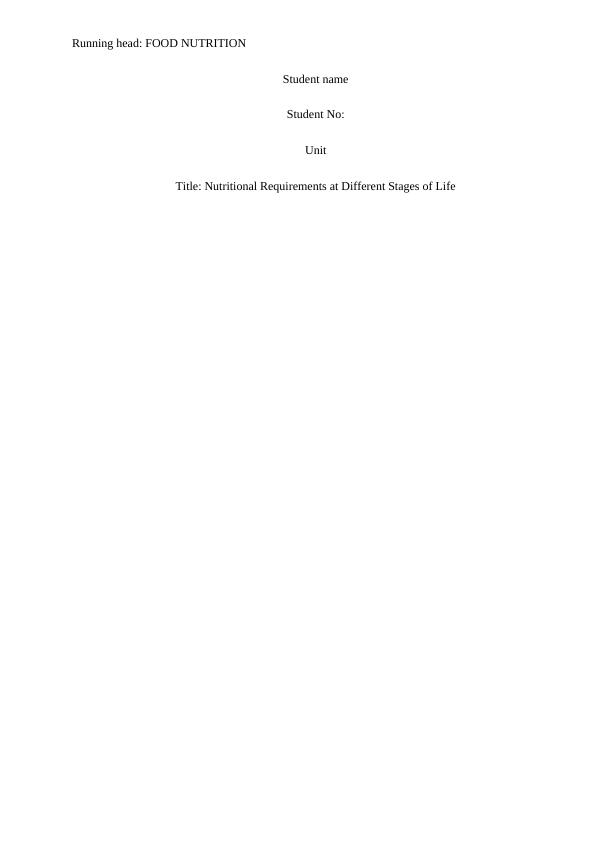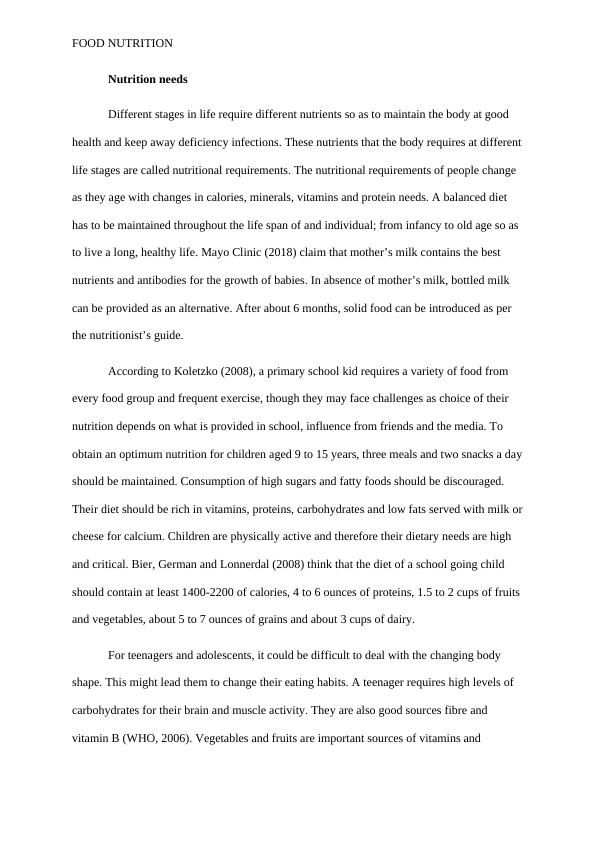Nutritional Requirements at Different Stages of Life
5 Pages1187 Words292 Views
Added on 2023-06-03
About This Document
Different stages in life require different nutrients so as to maintain the body at good health and keep away deficiency infections. These nutrients that the body requires at different life stages are called nutritional requirements. The nutritional requirements of people change as they age with changes in calories, minerals, vitamins and protein needs. A balanced diet has to be maintained throughout the life span of and individual; from infancy to old age so as to live a long, healthy life.
Nutritional Requirements at Different Stages of Life
Added on 2023-06-03
ShareRelated Documents
End of preview
Want to access all the pages? Upload your documents or become a member.
Fundamentals of Nutrition - Nutrient Density, Energy Density, Examples of Nutrient Dense and Energy Dense Foods
|5
|656
|462
Diet Diary Bakery Science and Nutrition: Macro and Micro Nutrients, 3-Day Plan, Recommendations
|7
|1472
|213
Components and Role of a Balanced Diet for Overall Health
|6
|1432
|94
Support Healthy Lifestyle For Children Through The Provision Of Food And Nutrition
|6
|1090
|48
2019. [. Evidence Based Nursing Researc ]. NURSING RESE
|4
|404
|383
Importance of Nutritional Requirements for Childhood Obesity
|1
|1555
|76


